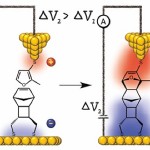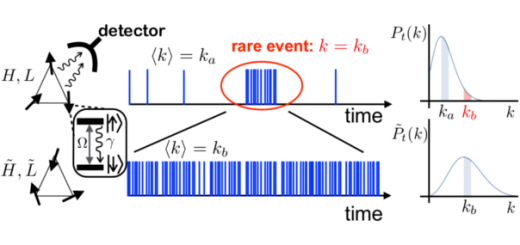Probing Concepts in Single-Molecule Wires: Diodes, Electromechanics, FETs, Spinterface, Photo-switches and… Single-molecule Chemistry?
 Title: Probing Concepts in Single-Molecule Wires: Diodes, Electromechanics, FETs, Spinterface, Photo-switches and… Single-molecule Chemistry?
Title: Probing Concepts in Single-Molecule Wires: Diodes, Electromechanics, FETs, Spinterface, Photo-switches and… Single-molecule Chemistry?
When: Friday, 10 June (2016), 12:00h.
Place: Departamento de Física Teórica de la Materia Condensada, Facultad Ciencias, Module 5, Seminar Room (5th Floor).
Speaker: Ismael Díez Pérez, Institute for Bioengineering of Catalonia (IBEC), University of Barcelona, Spain.
Inspired by the vision that single molecules could ever be functional elements in future nano-optoelectronic devices, there has been considerable interest in understanding charge transport in individual molecular backbones [1]. The birth of the Single-molecule Electronics field occurred with the first experimental realization of single-molecule wires [2]. Today, this field is powered by the combined efforts from very different disciplines; engineering, physics, chemistry and, lately, molecular biology. Our contributions to this field come from the Chemistry branch, with a vision based on developing new molecular moieties to provide new electrical capabilities into the single-molecule device. Along this adventure, it is also our goal to deepen into the understanding of chemistry-related charge transport in order to ultimately transfer all this knowledge into the biological electron transport, undoubtedly one of the key fundamental processes in life. As the title suggests, this seminar will show you a list of recent examples reporting newly designed molecules with a very specific electronic target when placed as a single-molecule wire [3-7]. We hope to convince you of the pivotal paper of molecular design in this field and of the vision that the Single-molecule Electronics field can directly profit from well-described chemistry supra-molecular chemistry processes. In this vein, the last example will show you our first attempt of using Single-molecule Electronics tools to analyze the catalytic aspects of a textbook chemical reaction [8].
References
- Lanlan Sun et al. Chemical Society Reviews 43 (2014) 7378.
- Xu, B., Tao, NJ. Science, 301 (2003) 1221.
- Díez-Pérez, I. et al. Nature Nanotechnology 6 (2011) 226.
- Díez-Pérez, I. et al. Nature Chemistry 1 (2009) 635.
- A.C.Aragonès et al. Nano Letters 14 (2014) 4751.
- N. Darwidh et al. Nano Letters 14 (2014) 7064.
- A.C.Aragonès et al. Nano Letters 16 (2016) 218.
- A.C.Aragonès et al. Nature 531 (2016) 88.



















